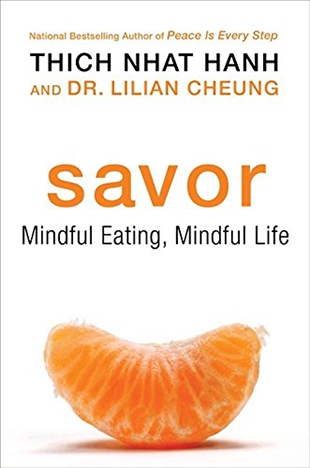According to Zen master Thich Nhat Hanh and Harvard nutritionist Lilian Cheung, more than a billion people worldwide are overweight. This figure is so high that scientists are calling it an obesity epidemic. While people struggle with their weight and try to eat less and exercise more, very powerful forces — physical, psychological, cultural, and environmental — are working against them. In the United States, weight-loss programs, diet books, diet foods, herbs, and pills are an estimated $59-billion industry. Yet so many who have tried these remedies have failed to lose weight and get fit. There is still no magic pill or formula that works universally.
In this edifying and accessible book, the authors offer a Buddhist perspective on weight control and well-being. Thich Nhat Hanh and Dr. Cheung present the Four Noble Truths as a new frame of reference for dealing with obesity: being overweight is suffering; you can identify the roots of your weight problem; reaching a healthy weight is possible; you can follow a mindful path to a healthy weight. To seal the deal of weight loss the authors share "A Mission Statement for Healthy Weight and Well-Being."
Next comes a mindfulness exercise from Thich Nhat Hanh on eating an apple so that we are truly present with it and aware of its connection with the natural world and our own life. They go on to examine the impact of the senses on our weight, our habits of eating and physical activity. This is followed by an emphasis on mindfulness as a tool that can be very helpful in assessing the challenges and obstacles that face us when we try to change our habit energies.
After a section on nutrition suggestions, Nhat Hanh and Cheung lay out seven practices of a mindful eater:
• Honor the food.
• Engage all six senses.
• Serve in modest portions.
• Savor small bites and chew thoroughly.
• Eat slowly to avoid overeating.
• Don't skip meals.
• Eat a plant-based diet for your health and for the planet.
Equally important is to mindfully move through regular exercise. More than half of all adults in the United States don't get enough physical activity, and 25 percent do not exercise at all. The authors offer a Mindful Living Plan that incorporates inEating, inMoving, and inBreathing (it denotes "in the moment"). This attentiveness can be applied to daily rituals. Here are a few examples:
Standing-in-Line Meditation
"Breathing in, I use this time just for myself, to unite my body and mind.
Breathing out, I feel refreshed."
Teeth-Brushing Meditation
"Breathing in, I am aware of my teeth and gums.
Breathing out, I look after my teeth and gums."
Light-Switch Meditation
"Breathing in, I am leaving this room.
Breathing out, I am mindful of not wasting any electricity."
Water-Faucet Meditation
"Breathing in, as I turn on the faucet, I am grateful for the clean water that sustains my life.
Breathing out, I remember the billions of people who are without clean water every day."
